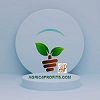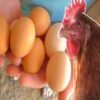- このトピックは空です。
- 投稿者投稿
- 3月 22, 2025 6:24 am #600207

Snail farming, or heliciculture, is gaining popularity as a sustainable and profitable agricultural venture. The success of a snail farm heavily relies on the quality of the snail house, which provides a controlled environment for optimal growth, health, and disease prevention.
The choice of materials and construction techniques significantly impacts these factors. This article explores the critical relationship between snail house materials and construction and the overall well-being of snail populations.
1. Soil Composition and Bedding Materials
The soil within the snail house is a crucial component, directly impacting snail growth and health. Snails absorb essential minerals and nutrients from the soil, and they also use it for laying eggs. Ideal soil should be loose, well-draining, and rich in organic matter.
Clayey soils that retain too much moisture can lead to fungal infections and shell rot. Bedding materials like coconut coir, peat moss, or loamy topsoil mixed with compost can provide a suitable substrate. The soil’s pH level is also critical; slightly acidic to neutral soil is preferred.
2. Construction Materials for Walls and Roofing
The materials used for the walls and roofing of the snail house influence temperature regulation and protection from predators. Walls can be constructed from various materials, including concrete blocks, wood, or wire mesh. Concrete blocks offer durability and temperature stability but can be expensive.
Wood provides a natural environment but may be susceptible to rot and pests. Wire mesh allows for ventilation but requires additional shading to regulate temperature.
Roofing materials like corrugated iron sheets, thatch, or shade netting are used to protect snails from direct sunlight and rain. Thatch provides excellent insulation, maintaining a stable temperature, while shade netting allows for ventilation but requires careful management of humidity.
3. Ventilation and Humidity Control
Proper ventilation and humidity control are essential for snail health and disease prevention. Stagnant air can lead to fungal infections and respiratory problems. The snail house should be designed to allow for adequate airflow while maintaining a high humidity level.
Ventilation can be achieved through strategically placed openings or the use of fans. Humidity can be maintained by regularly spraying water or using humidifiers. The materials used in construction can also influence humidity levels; materials that retain moisture, like clay or thatch, can help maintain a humid environment.
4. Drainage and Sanitation
Effective drainage and sanitation are critical for preventing disease outbreaks in snail farms. Poor drainage can lead to waterlogging, creating a breeding ground for pathogens. The snail house should be designed with a sloped floor or drainage channels to allow for proper water runoff.
Regular cleaning and removal of waste materials are also essential for maintaining a sanitary environment. Materials that are easy to clean and disinfect, such as concrete or plastic, are preferred for the floor and walls.
5. Protection from Predators and Pests
Snails are vulnerable to various predators and pests, including rodents, snakes, insects, and other animals. The snail house must be designed to provide adequate protection from these threats. Wire mesh barriers, rodent-proof walls, and secure entrances are essential.
The materials used in construction should be sturdy and durable, preventing predators from accessing the snail population. Regular monitoring and pest control measures are necessary to maintain a safe environment.
The materials and construction of a snail house play a pivotal role in snail growth, health, and disease prevention. By carefully selecting materials that promote optimal soil conditions, temperature regulation, ventilation, drainage, and protection from predators, snail farmers can create a thriving environment for their snails.
A well-designed snail house not only enhances snail productivity but also contributes to the long-term sustainability of the snail farming enterprise.
Read Also: Exploring The Options: Different Types Of snail feed
- 投稿者投稿
- このトピックに返信するにはログインが必要です。






